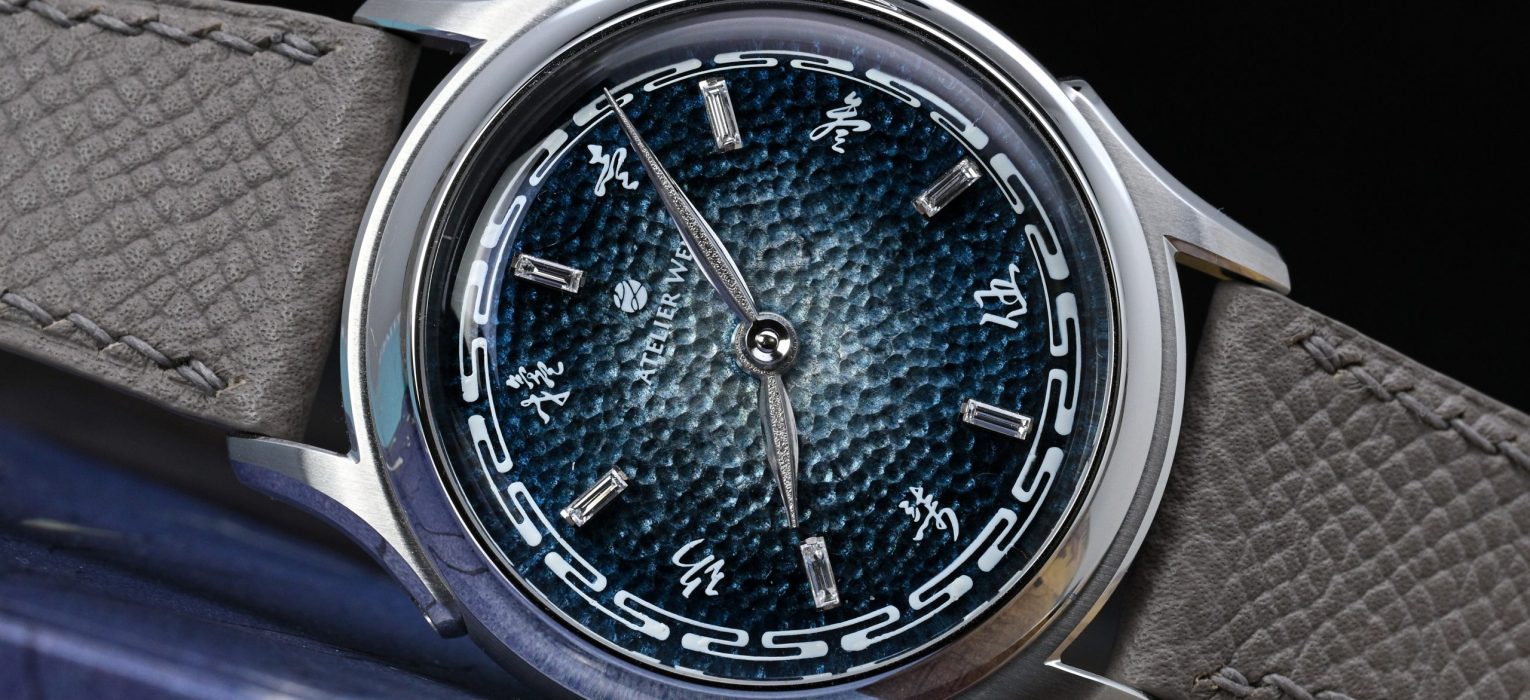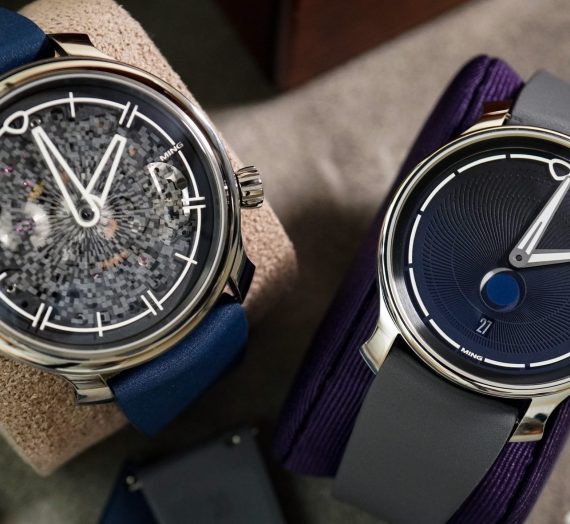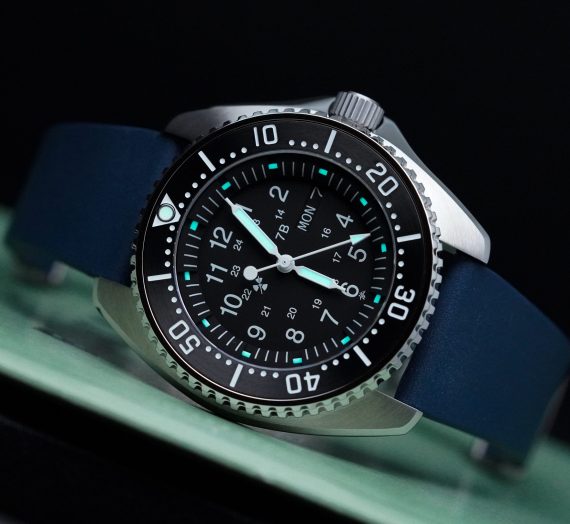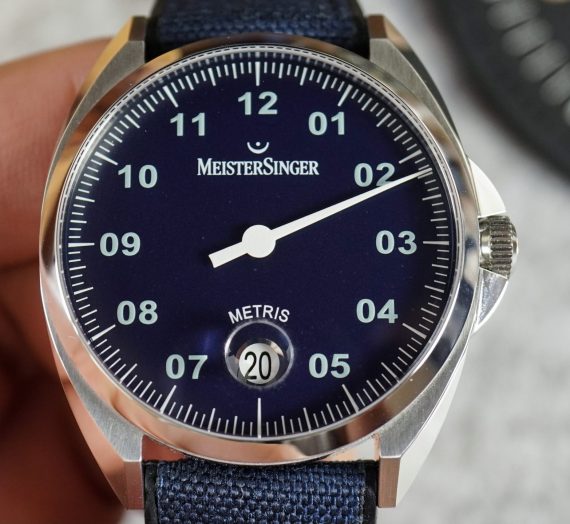Disclaimer: this video/review was not sponsored by Atelier Wen or any other entity.
Video
Review
At this point, I probably don’t need to introduce Atelier Wen to most of you because if you’ve been following artisanal and micro-indie watchmaking over the past few years, you’ve almost certainly come across the brand. I’ve been a fan ever since I stumbled upon their work over five years ago, and I’ve had the chance to review and own several of their pieces: from the elegant Porcelain Odyssey Ji (which I reviewed early on) to the Hao edition I later purchased, and more recently, the Perception Piao and the titanium Millésime Mù, two very impressive lines of watches with excellent variants.
The new Ancestra 蛟 (Jiao) feels like the long-awaited spiritual successor to the Porcelain Odyssey series… only this time, Atelier Wen is swinging for the fences. Priced at $5,850 USD, the Ancestra is a bold leap forward in terms of materials, design, and finishing. I only had this watch in hand for about 36 hours, and I was admittedly late to the party, so by the time you’re reading this, the order window may already be closed. It’s available for pre-order directly from Atelier Wen with a 30% deposit, with deliveries expected between late Q2 and Q3 2026. If you’re in the U.S., Collective Horology is also offering the watch at $6,200 USD, which could end up being the better deal once you factor in import duties.
Let’s take a closer look…
Case
I measured the 904L stainless steel case of the Ancestra Jiao at 37.75mm across the mid-case, or 39.25mm if you measure across the slightly projecting lug segments. Lug-to-lug, it spans a compact 45.5mm, and it measures 11.1mm in total thickness; though a good portion of that is thanks to the glorious boxed sapphire crystal, which is seamlessly integrated into the case and adds a perfect dose of vintage charm. From almost any angle, the crystal gives you this soft distortion and layered depth that makes looking at the dial absolutely delightful, particularly the chapter ring.
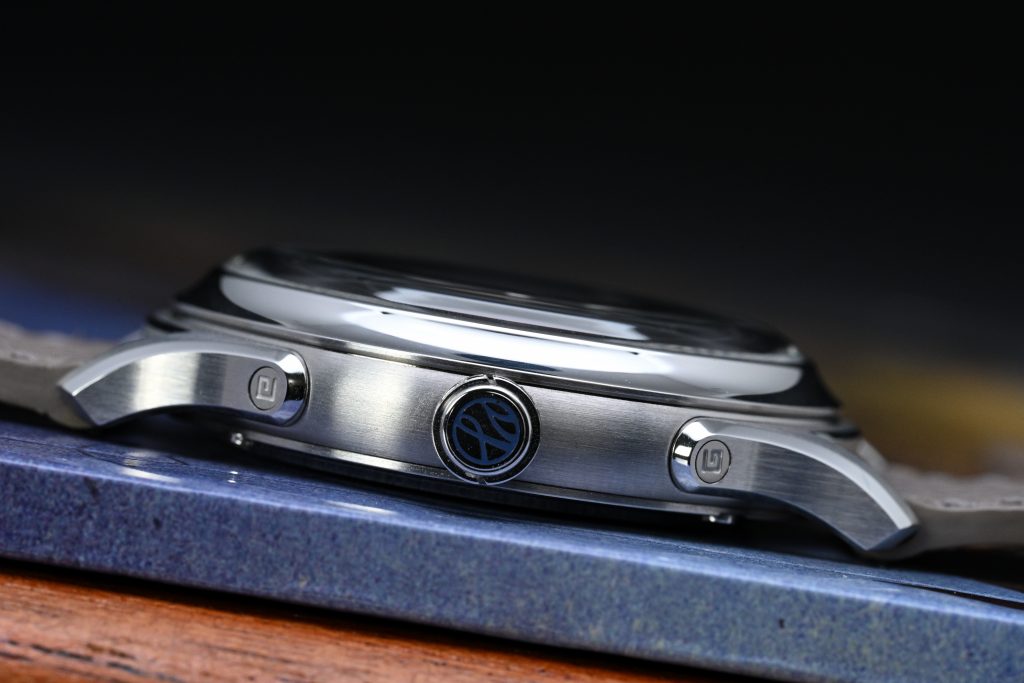
The very first thing that struck me when handling the Ancestra in person was just how exceptionally well-executed the case design is. It doesn’t try to reinvent the wheel with radical shapes or over-the-top complexity, but it doesn’t need to: the strength lies in how every detail feels deliberate. From the curves of the mid-case to the transitions between brushed and polished surfaces, it all comes together like a single, well-orchestrated object rather than a stack of design elements. The lines are clean, the proportions are spot-on, and nothing feels out of place or neglected.
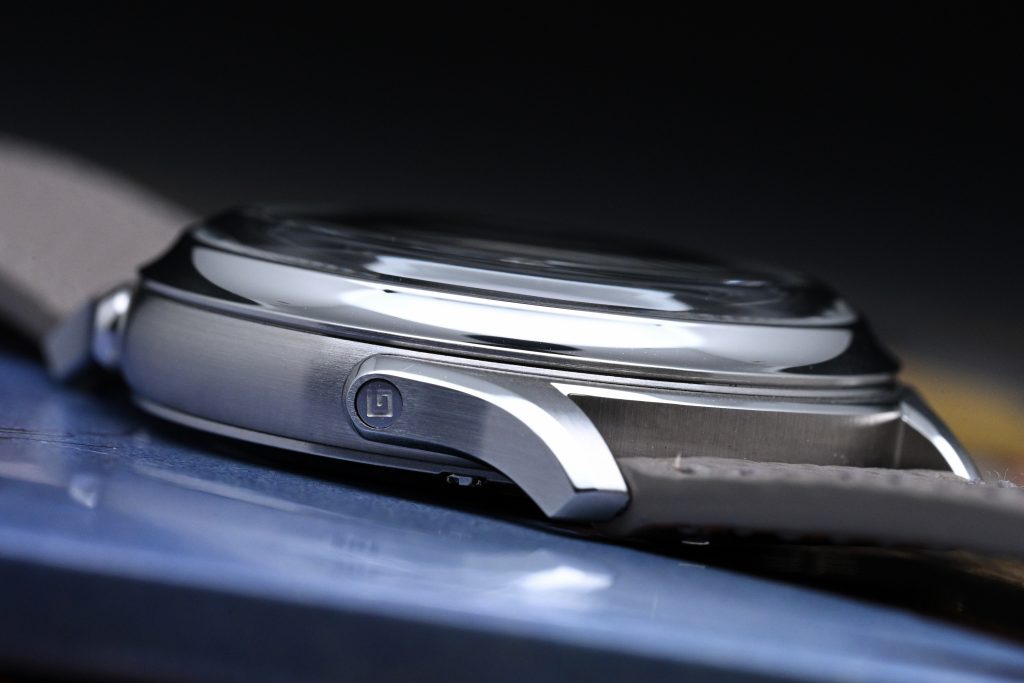
One of the standout features is the lug construction: each lug is an independent component, screwed into the case with visible screw heads that are individually signed with a traditional Chinese motif. It’s a brilliant design choice – not just structurally interesting, but aesthetically satisfying as well. The finishing is where the Ancestra really flexes its muscles: a tight horizontal brush pattern runs along the curved mid-case, a wider brushed texture decorates the top and sides of the lugs, and polished bevels create striking contrast throughout. The concave polished bezel flows organically into the crystal, giving the watch a sense of cohesion that’s genuinely impressive.
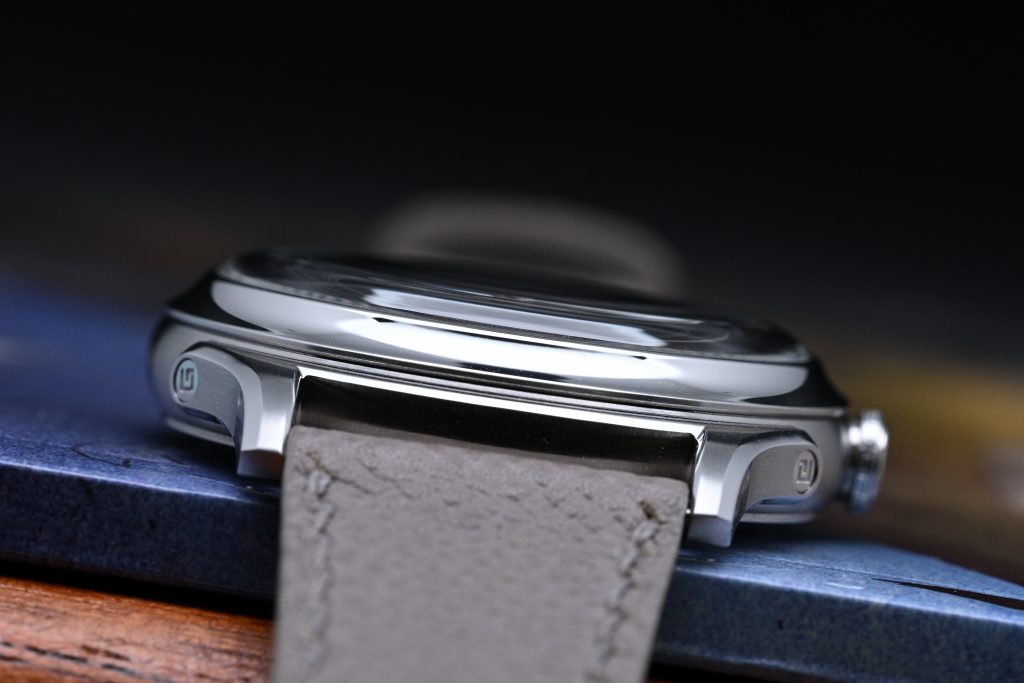
At 3 o’clock, the crown is a slim 5mm screw-down design with Huiwen pattern knurling and a lacquered brand logo on its polished end. The case is very subtly recessed to accommodate the crown, creating a profile that’s sleek and ergonomic. The crown isn’t the easiest to grip, but the tradeoff is a cleaner, more integrated case silhouette. Around back, the screw-in case back houses an exhibition window that reveals the customized automatic movement from Pequignet. And with a 100m water resistance rating, the Ancestra is ready to be worn as a true everyday watch.
Dial
While the case may be the element that won me over, it’s clear that the dial is intended to be the centerpiece of the Ancestra 蛟 Jiao, and I suspect it’s what will first capture most people’s attention. At its core, the dial begins with a hand-hammered silver base that gives it a textured, almost organic quality. Over this, multiple layers of enamel are applied to create a nuanced fumé/gradient that transitions from a near-white center to a deep, rich blue around the edges. On this particular prototype, the color skews a bit more toward bluish-grey, but other samples, including those featured in Swiss Watch Gang’s coverage, appear noticeably bluer. From what I’ve gathered, the production versions will lean more in that direction, which I think I prefer.
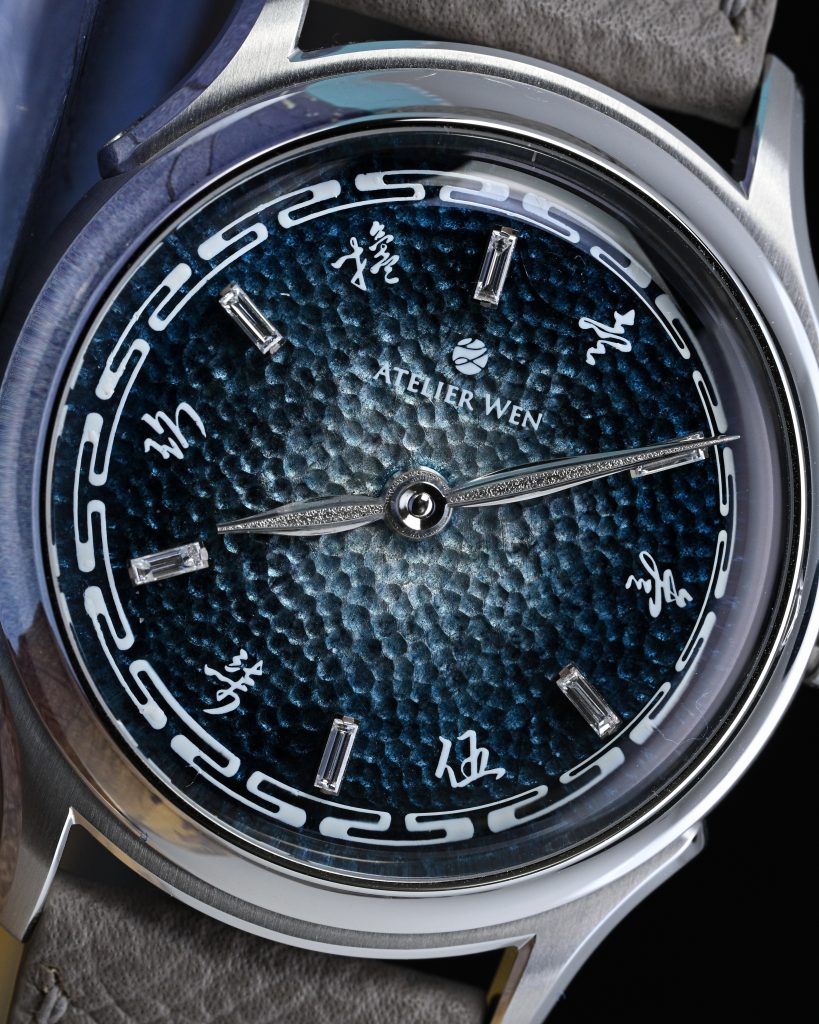
Surrounding the main dial is a pad-printed chapter ring that’s been perfectly positioned just where the boxed sapphire crystal is most distorted. The result is visually fascinating: the distortion creates a magnifying effect that gives the illusion that the chapter ring is much larger and more three dimensional than it really is. Rather than obscuring legibility, this distortion actually improves it, making the watch incredibly easy to read at a glance. It is impossible not to appreciate how well thought-out this design is.
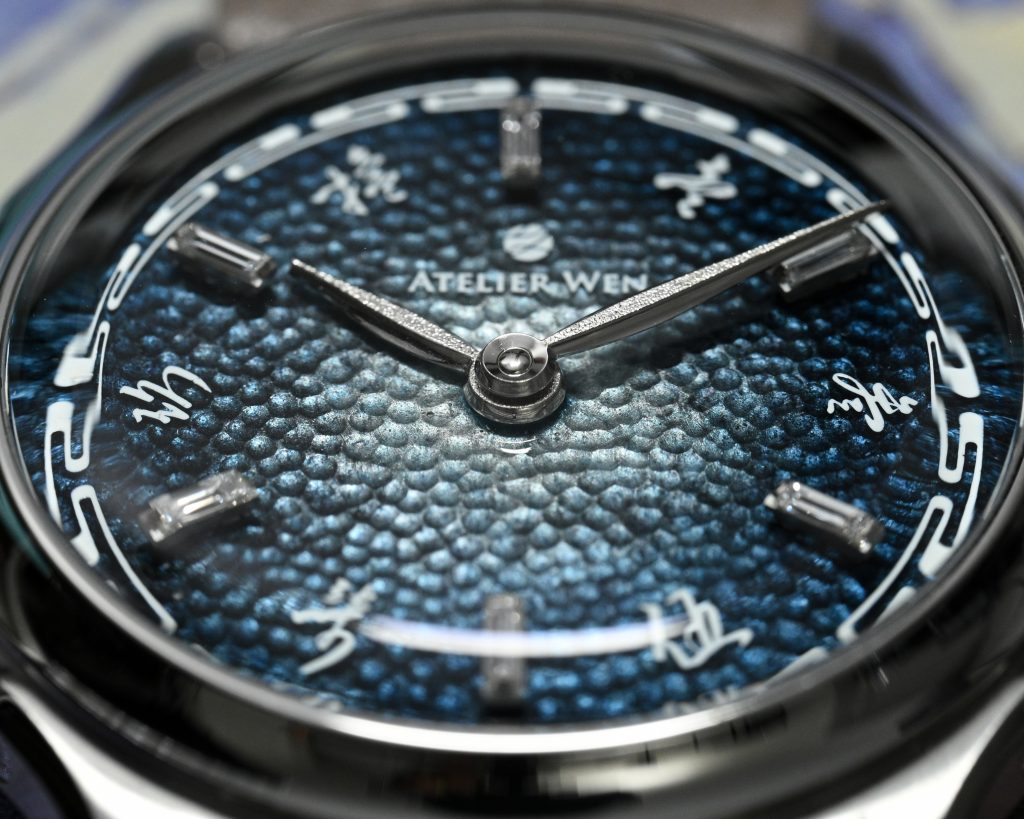
The dial layout features Chinese numerals pad-printed at the odd hours, and baguette-cut diamonds placed on raised platforms at the even hours. These diamonds sit above the dial in this prototype, creating a floating effect, but I’m told the production units will have the baguettes set flush into the enamel surface for a more integrated look.
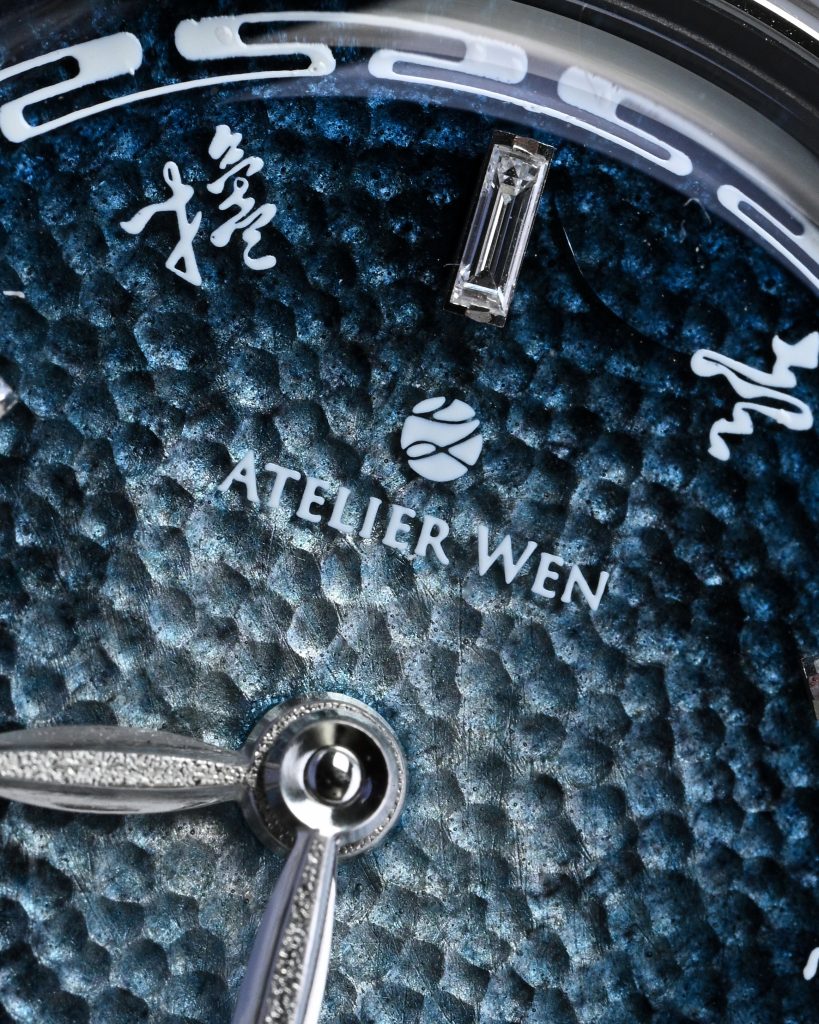
While the idea is solid and well-executed conceptually, the finishing on this specific prototype isn’t quite where it needs to be yet. The pad printing of the numerals and branding under the 12 o’clock marker shows noticeable inconsistency under magnification, and there are a few visible scratches on the enamel surface. Given that this is a prototype, I’m not overly concerned, but at a $6,000 price point, it’s fair to expect Atelier Wen’s usual high standards of quality control to carry through to the final production batch. With nearly 10 months before delivery, there’s plenty of time to tighten that up.
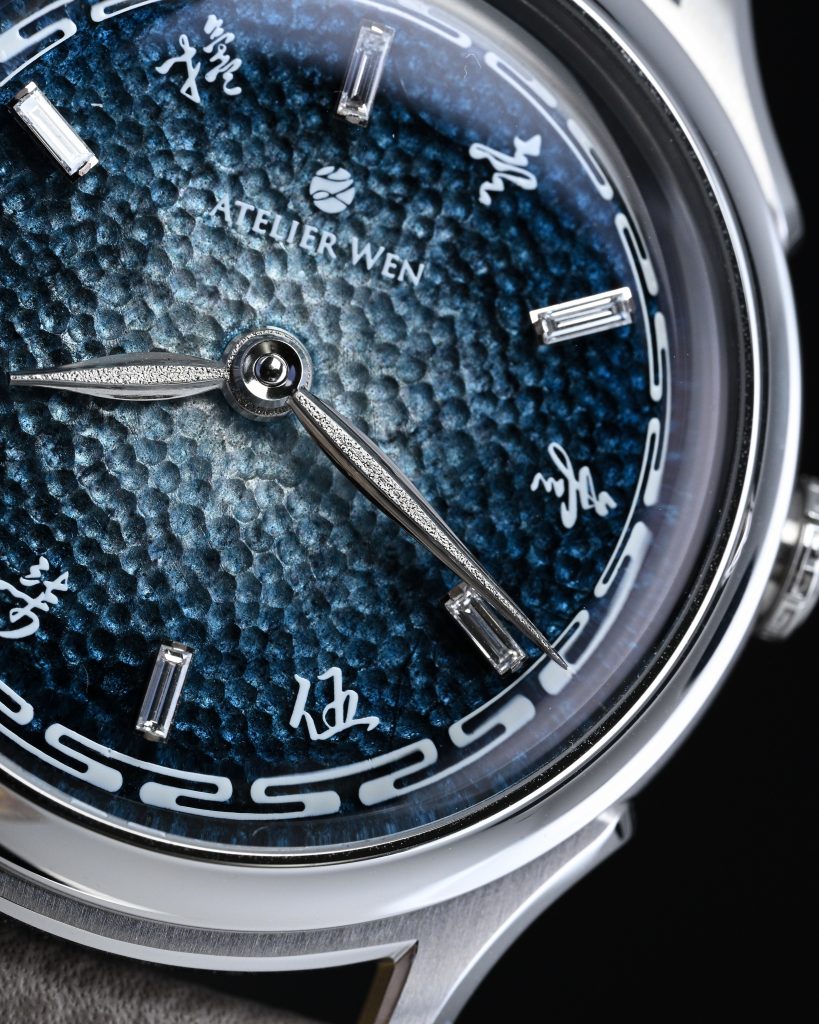
The highlight of the dial for me, however, has to be the hands. They are sculptural, intricate, and unlike anything else I’ve seen. Each hand features a beautiful blend of polished bevels and hammered surfaces, giving them a tactile, almost organic character that pairs beautifully with the dial’s artisanal base. The proportions are excellent: long enough for easy legibility, but shaped in a way that adds personality and depth without compromising clarity. They catch light in fascinating ways and feel like tiny works of art in their own right. It’s this combination of visual flair and thoughtful ergonomics that elevates the watch and reinforces just how carefully considered every element of the Ancestra really is.
Movement
The movement is the Pequignet EPM03, also known as the Calibre Initial, and it marks a major step forward for Atelier Wen in terms of both performance and perception. Introduced in 2021, the EPM03 is the third in-house calibre developed by Pequignet, a French manufacture whose original goal was to produce a movement made entirely, or nearly entirely, in France. While their flagship Calibre Royal and its manual-wind sibling fully realized that ambition, the EPM03 still holds strong to those roots, reportedly sourcing around 72% of its components from within France, while relying on the Swatch Group for the remainder.
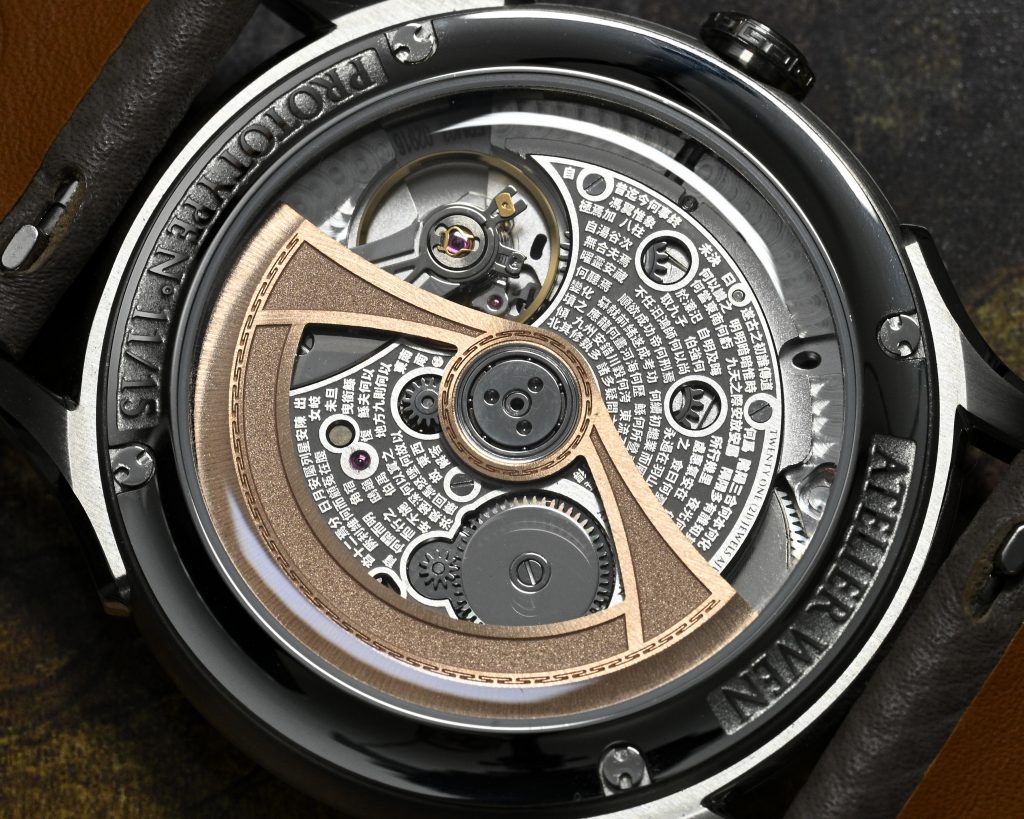
Atelier Wen’s earlier watches, particularly the Porcelain Odyssey and Perception series, often drew criticism for using Chinese-made movements; a topic that became something of a sticking point for many collectors. Personally, I sold my Odyssey largely because I couldn’t get past the limitations of its movement. The Perception’s SL1588 was a massive improvement, but even then, the reality is that many buyers, especially in the rapidly climbing price range of the Perception series, still hesitate at the idea of a Chinese mechanical movement. The SL1588 wasn’t a perfect movement either, with a 42-hour power reserve, no hacking seconds, and a visibly derivative architecture. Performance was rated at +/-10 seconds per day, which was fine, but left room for improvement.
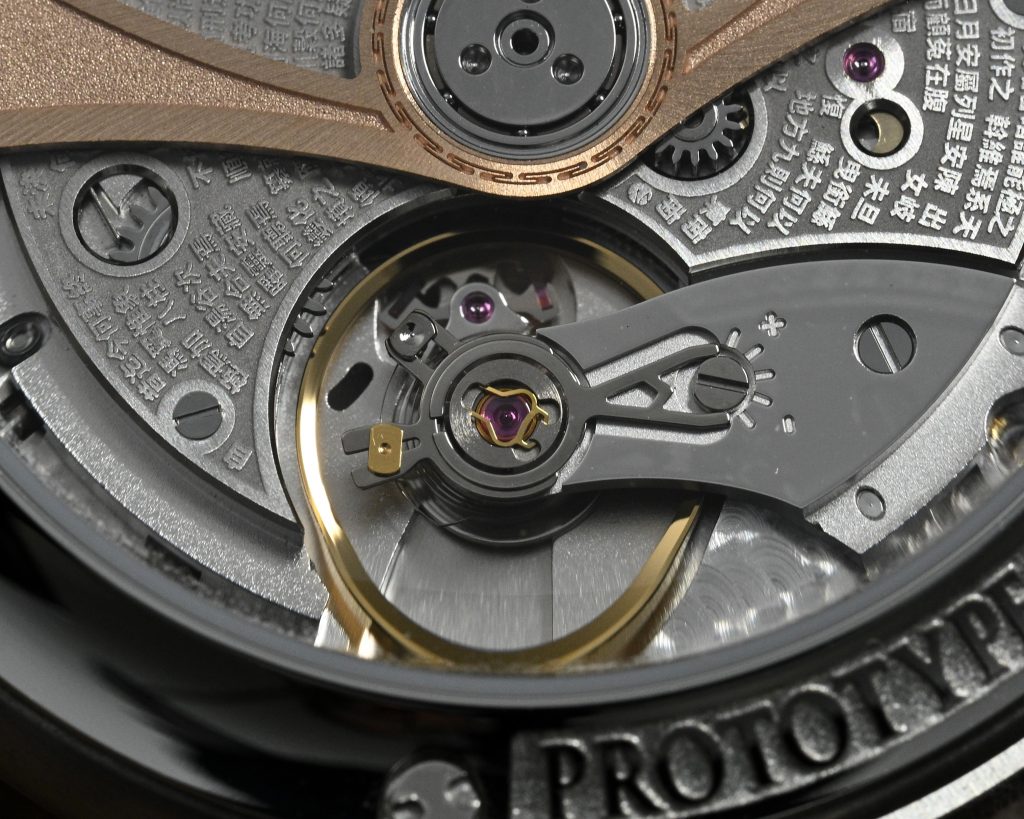
The EPM03, by contrast, is a major leap forward on every front. It’s just 0.3mm thicker than the SL1588 but delivers a substantial 65-hour power reserve, hacking seconds, and much tighter regulation. Atelier Wen specifies the movement to run within -4 to +6 seconds per day, adjusted in six positions, with a targeted average deviation of just +/- 2 seconds, a level of chronometric ambition that puts it squarely in competition with more prestigious Swiss offerings.
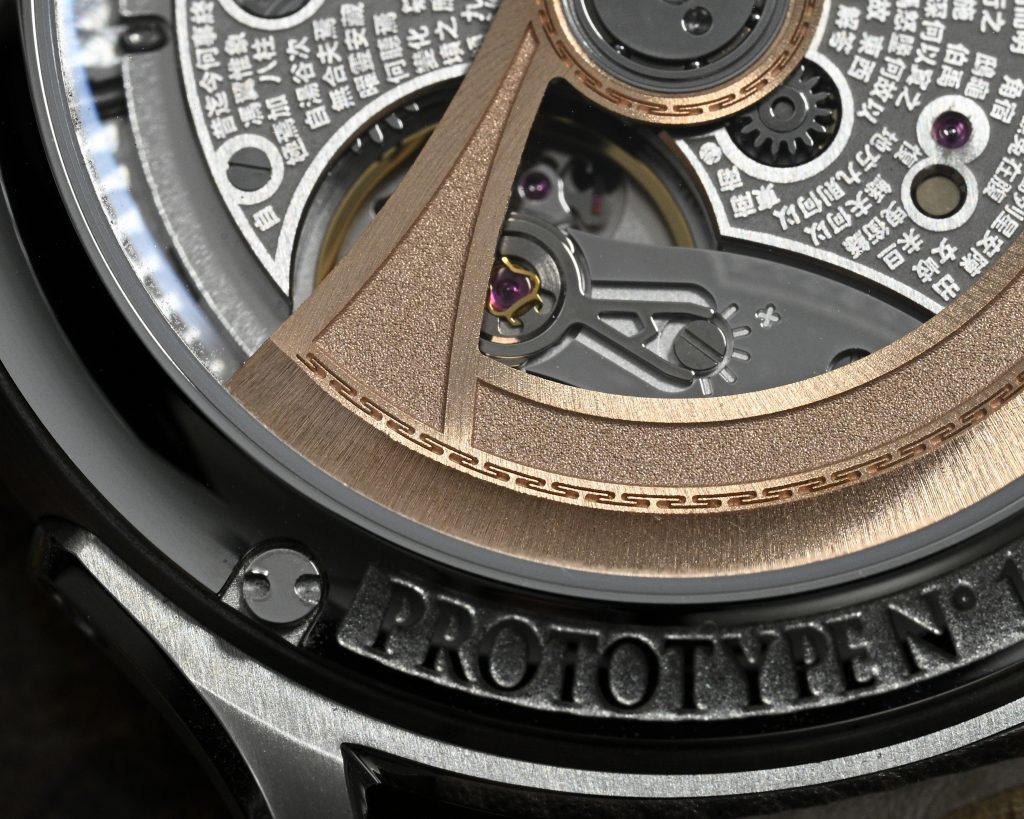
Their customization of the EPM03 is impressive too – the ratchet wheels and balance bridge are finished in mirror-like black polish, and the 3/4 bridge features an intricately laser-engraved Chinese manuscript containing 446 characters. The rotor is skeletonized tungsten, with a mixed finishing profile and a laser-etched Huiwen motif that subtly ties back to the brand’s design language. It’s not just a nice movement to look at, it’s one that reflects the same dual-cultural story that defines the rest of the watch.
All things considered, this is a tremendous upgrade from the Peacock calibres used in earlier models, and it feels like the right move at the right time. The French origin and technical chops of the EPM03 allow Atelier Wen to maintain their signature French-Chinese identity while addressing prior movement-related criticisms head-on.
On The Wrist
In terms of wear-ability, the Ancestra hits a near-perfect balance. The case diameter falls somewhere between 38mm and 39mm depending on how you measure it, which places it firmly in the Goldilocks zone for slightly dressier watches, especially on my 6.75″ wrist. Add to that a lug-to-lug length of 45.5mm, and you’ve got a case that wears effortlessly on a wide range of wrist sizes without feeling too compact or too bold. Despite the 11.1mm listed thickness, the watch wears much slimmer than that number might suggest. A significant portion of the height comes from the dramatically boxed sapphire crystal.
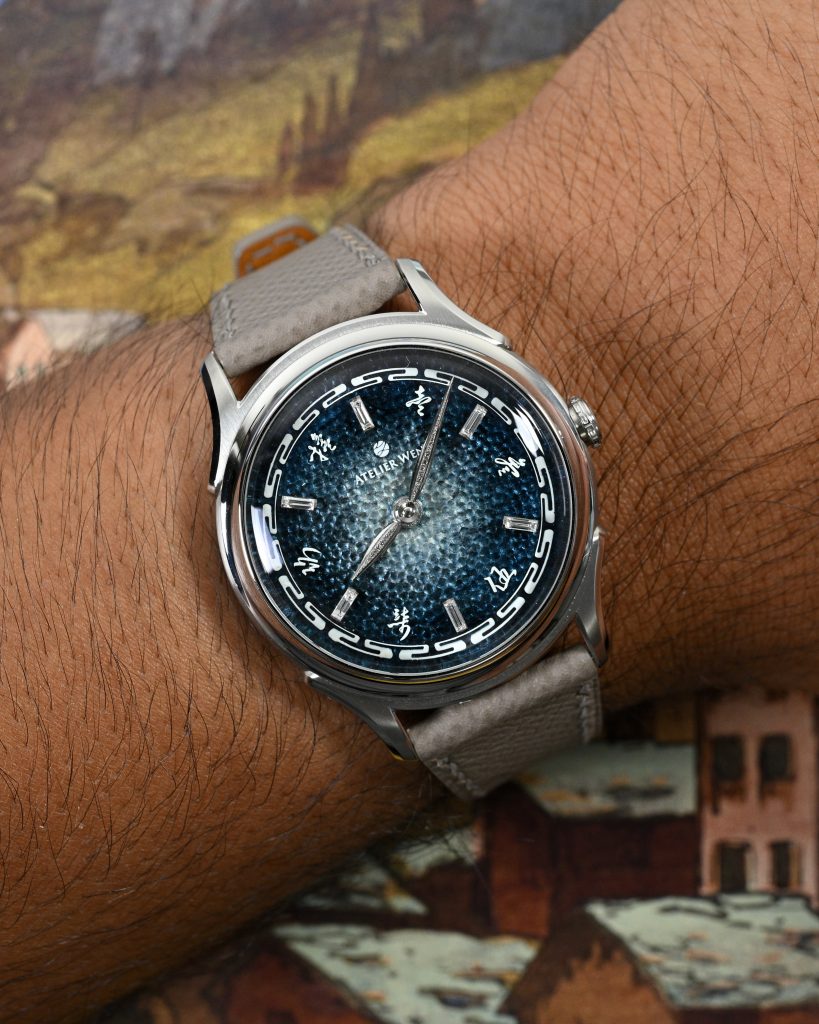
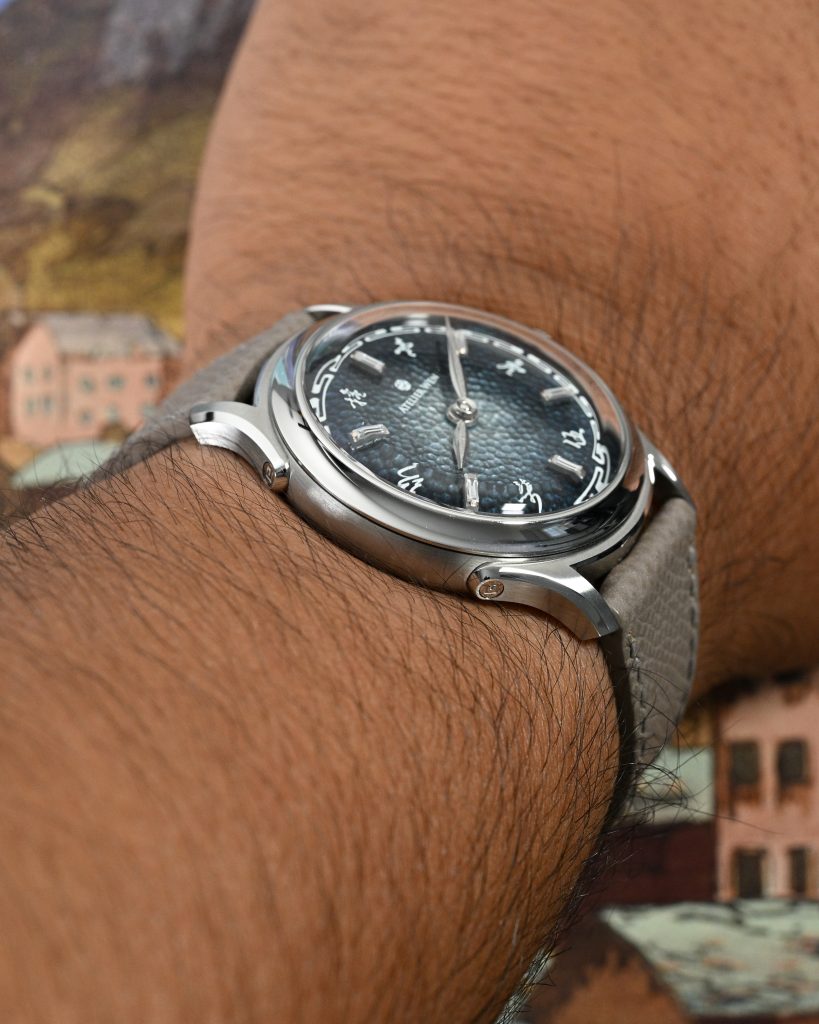
The included strap is a full-grain leather strap with an Epsom upper and Zermatt calfskin lining, tapering elegantly from 20mm at the lugs to 16mm at the bespoke buckle. The buckle itself mirrors the design language of the case with sharp bevels and thoughtful detailing, making it feel like a cohesive extension of the watch rather than an afterthought.
Wrapping Up
I’ll wrap this up by saying that the Ancestra completely lives up to, and in many ways surpasses, the expectations set by Atelier Wen’s earlier work on the Porcelain Odyssey and Perception series. It’s a bold evolution for the brand, and one that feels well-earned. That said, the 9 or 10 month wait from pre-order to delivery just isn’t something I can personally commit to anymore, so I’ll be keeping an eye on the pre-owned market a year or two down the line. But if you’re someone who doesn’t mind locking in 30% and being patient, I think you’re in for a real treat.
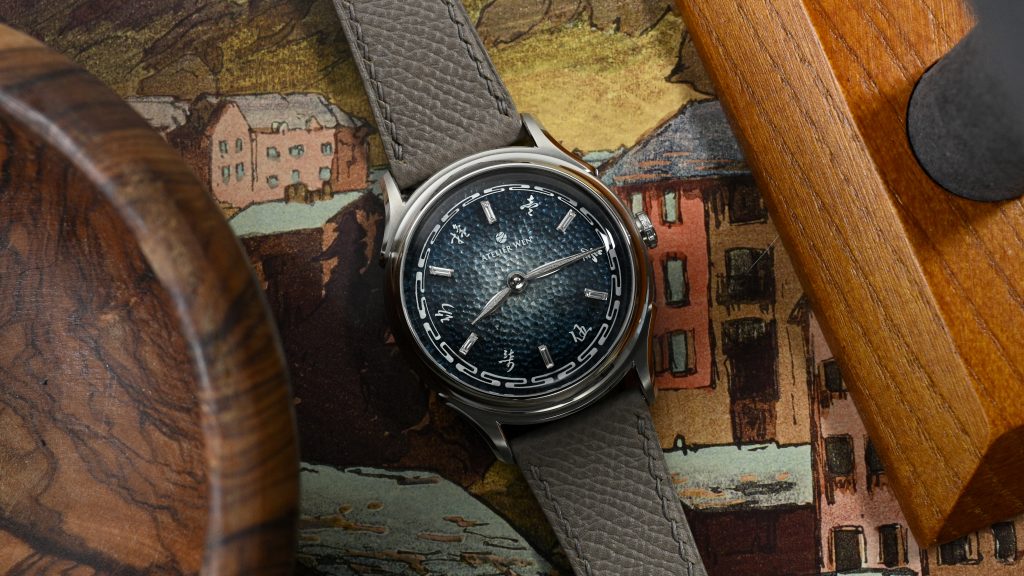
This particular prototype did have a few minor QC quirks: nothing major, and nothing unexpected at this stage… but worth noting. The baguette indices, for example, are set to look even more flush and refined on the final production units. Even with those caveats, though, the Ancestra makes a very compelling case (pun entirely intended). The case itself is stunning; easily my favorite aspect of the watch, and the level of decoration on the movement is a good way to measure how much thought and effort went into creating this watch. I genuinely can’t wait to see where they take this series next, and if the production versions live up to this early glimpse, there’s a good chance I’ll end up owning one down the line.

